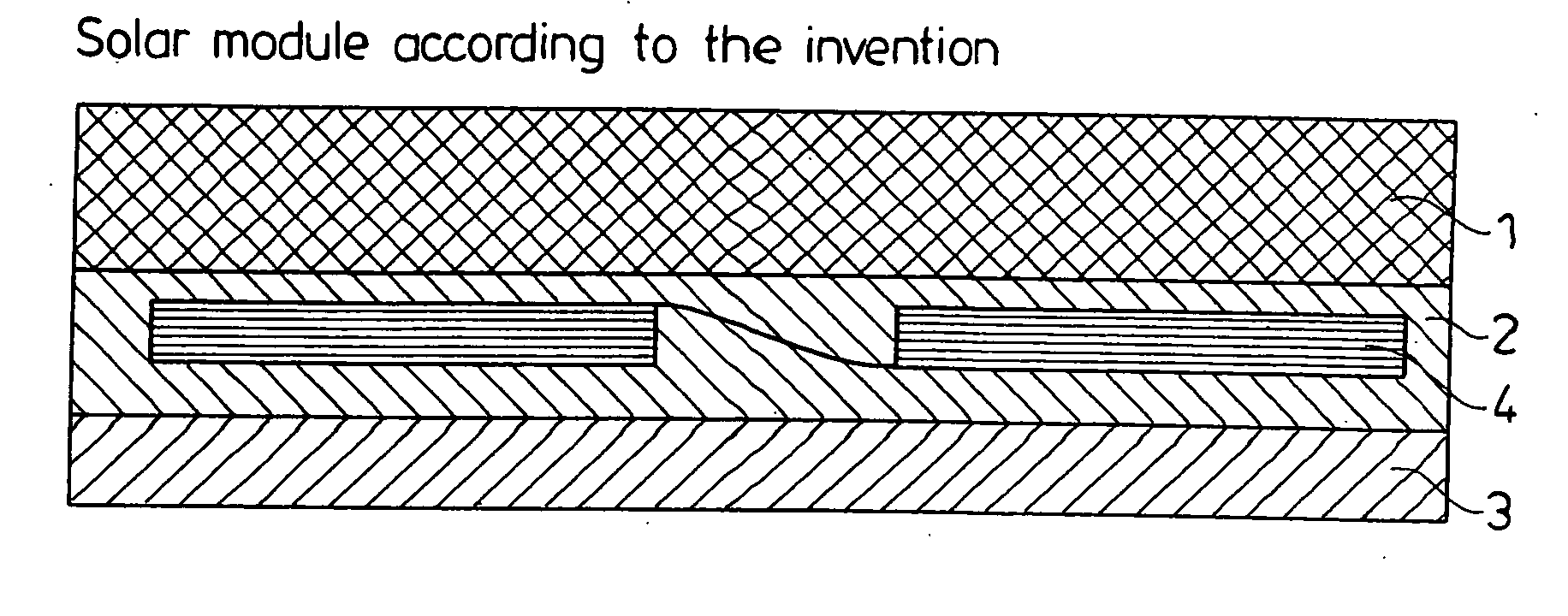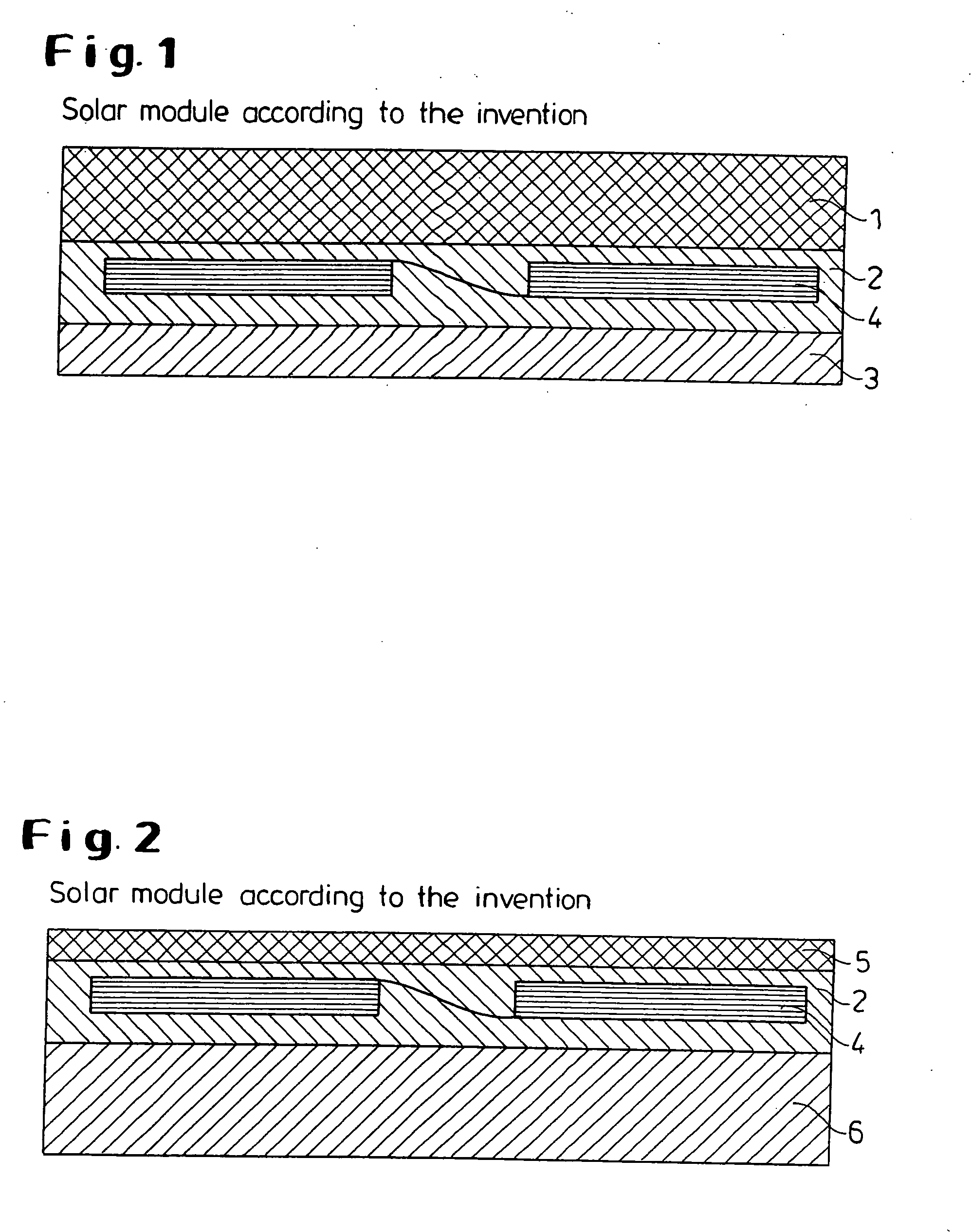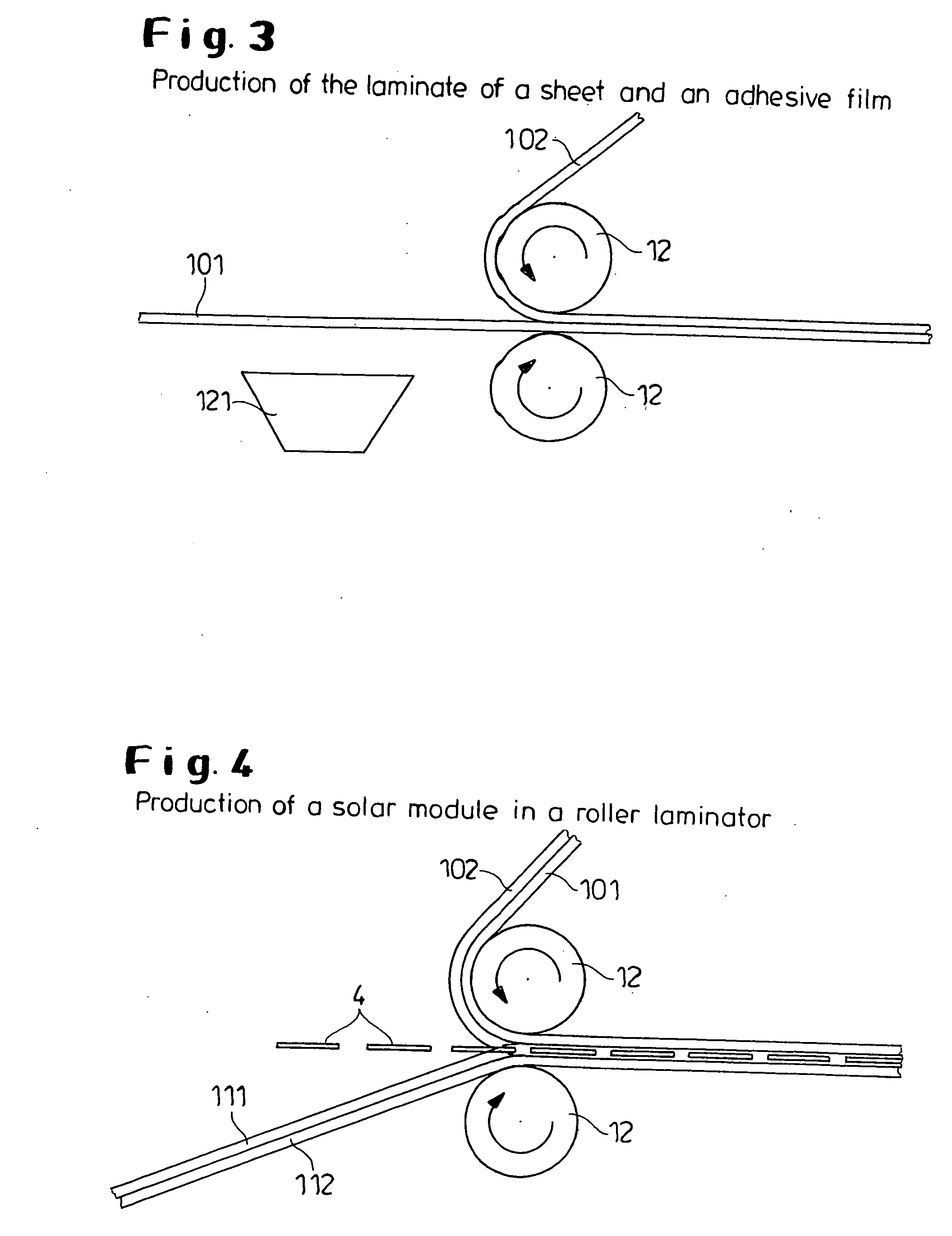Photovoltaic modules with a thermoplastic hot-melt adhesive layer and a process for their production
a thermoplastic hot-melt adhesive and photovoltaic module technology, applied in the direction of photovoltaic energy generation, film/foil adhesives, photovoltaics, etc., can solve the problems of affecting the output of the module, and affecting the production process. , to achieve the effect of low weight, fast and inexpensive process for the production
- Summary
- Abstract
- Description
- Claims
- Application Information
AI Technical Summary
Benefits of technology
Problems solved by technology
Method used
Image
Examples
example 1
[0080] A film of Texin® DP7-3007 (commercial product from Bayer Corp., hardness: 58 Shore D) was extruded on to a Makrofol® film as follows: A vertical die arrangement was attached to an extruder with a roll unit from Reifenhäuser (with a chill roll). The casting roll of the unit was preceded by a backing roll with a rubber-covered surface. The die was positioned between the casting roll and backing roll. To achieve a wind-up speed which is very slow for this “chill roll” unit, the film composite was taken off by only one winder. To improve the adhesion of the Texin® melt to the Makrofol® film DE 1-1 employed (with a thickness of 375 μm (commercial product of Bayer AG)), the Makrofol® film was preheated with IR lamps before feeding in the melt. The Texin® was predried in a dry air dryer for 6 h at 60° C.
[0081] The following processing parameters were established:
Die temperature180°C.Material temperature of the Texin ®186°C.Pressure before the die75barSpeed of rotation of the extr...
example 2
[0086] A film was extruded using Desmopan® 88 382 (commercial product from Bayer AG, hardness:80 Shore A) as follows:
[0087] A horizontal die arrangement was attached to an extruder with a roll unit from Somatec (with a chill roll). The chill roll was positioned about 5 cm below the die.
[0088] To achieve a wind up speed which is very slow for this “chill roll” unit, the film was taken off by only one winder. The Desmopan® was predried in a dry air dryer for 6 h at 75° C.
[0089] The following processing parameters were established:
Die temperature170°C.Material temperature of the Texin ®177°C.Pressure before the die27barSpeed of rotation of the extruder40rpmTemperature at the chill roll10°C.Wind up speed1.7m / min
[0090] The film produced in this way was then used as an adhesive layer in a solar module as described in FIG. 1. The top side of the module (15×15 cm2) was made of hardened white glass and the reverse side of a composite film (Tedlar-PET-Tedlar). The solar modules were prod...
PUM
| Property | Measurement | Unit |
|---|---|---|
| Temperature | aaaaa | aaaaa |
| Temperature | aaaaa | aaaaa |
| Thickness | aaaaa | aaaaa |
Abstract
Description
Claims
Application Information
 Login to View More
Login to View More - R&D
- Intellectual Property
- Life Sciences
- Materials
- Tech Scout
- Unparalleled Data Quality
- Higher Quality Content
- 60% Fewer Hallucinations
Browse by: Latest US Patents, China's latest patents, Technical Efficacy Thesaurus, Application Domain, Technology Topic, Popular Technical Reports.
© 2025 PatSnap. All rights reserved.Legal|Privacy policy|Modern Slavery Act Transparency Statement|Sitemap|About US| Contact US: help@patsnap.com



